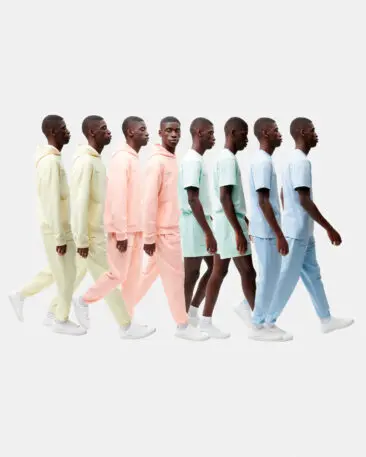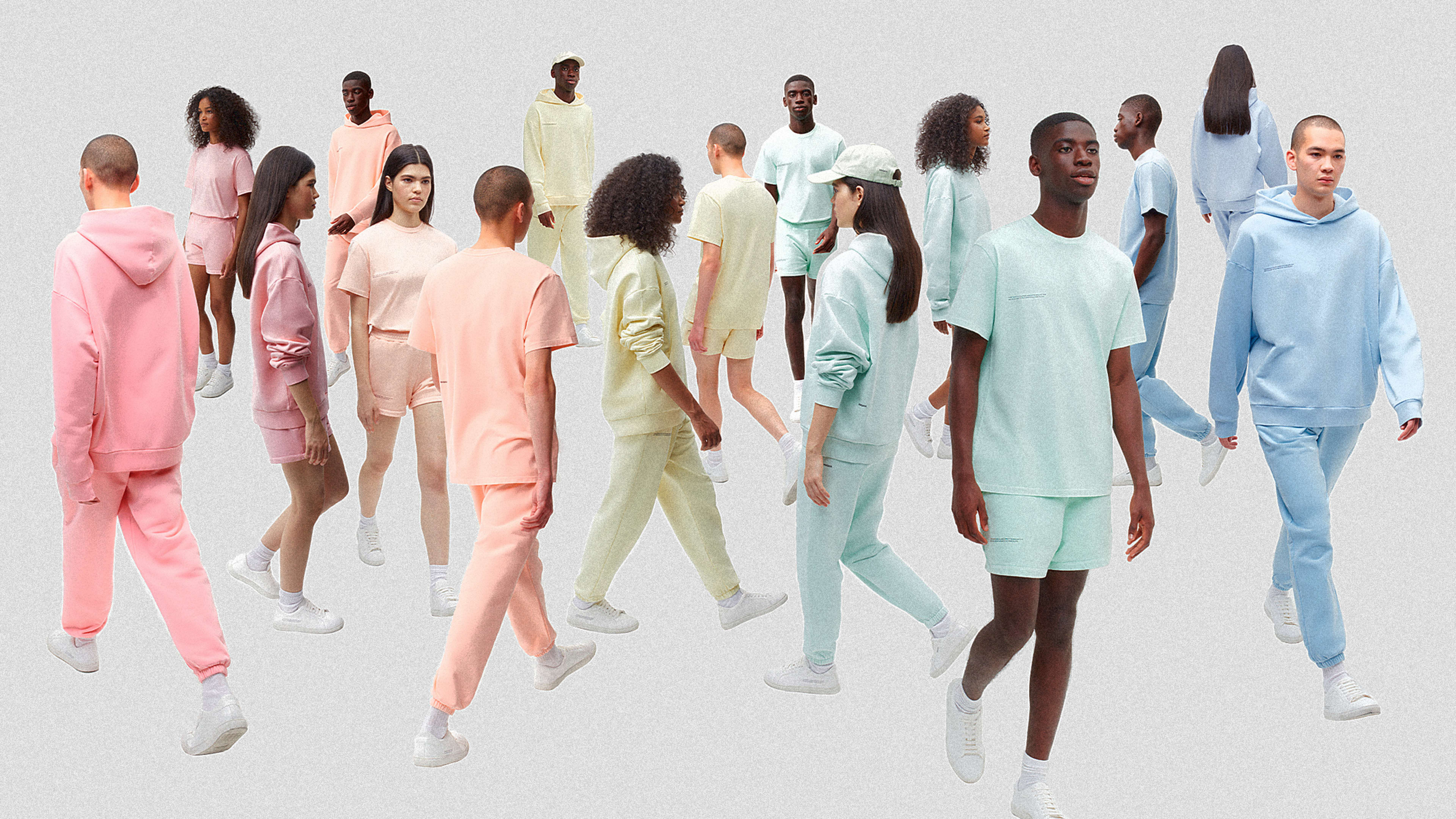The light blue color in a new hoodie didn’t come from conventional dye: Instead, the sustainability-focused clothing brand Pangaia worked with a partner to create dye from scraps of blue fabric collected from its factory floor. A rainbow of other colors in the new product line, from light pink and apricot to yellow and green, also came from transformed textile waste.
The brand’s partner, Italian textile chemical company Officina+39, turns scraps and old clothing that would otherwise be thrown out into colored powder. Using a patented process, the recycled powder becomes a dye that can be sprayed, coated, printed, or dipped onto new fabric.
“You literally chop up the garment, turn it into a powder, and then mix in the other secret sauce to turn it back into a dye,” says Amanda Parkes, chief innovation officer at Pangaia. (Officina+39 doesn’t publicly share details of how the proprietary process works.) Colors from old garments can also be mixed to create new shades.
[Image: Pangaia]Three-year-old Pangaia—which Parkes considers a materials science company, not a typical fashion brand—has previously dyed clothing with pigment made with microbes, made sunglasses from captured CO2, and created streetwear from food waste, among other innovations aimed at reducing its environmental impact.

“We’re committed to making our entire process circular,” Parkes says. Some clothing waste can be recycled into new fabric. Officina+39’s technology, though, has the advantage of also working with old fabrics that can’t easily be recycled because the fibers aren’t strong enough to be reused.

In its current stage, the technology has some limitations—it’s harder to make deep shades, for example. But Parkes says the process is still in development. With the new line, called the Re-Color Capsule, Pangaia’s team wants to demonstrate that it’s possible to create consistent colors using various scraps collected from the factory.
Parkes concludes: “We want to be a model for brands to show how when everybody is responsible up and down the supply chain, this technology can be put to best use.”
Recognize your brand’s excellence by applying to this year’s Brands That Matter Awards before the early-rate deadline, May 3.
